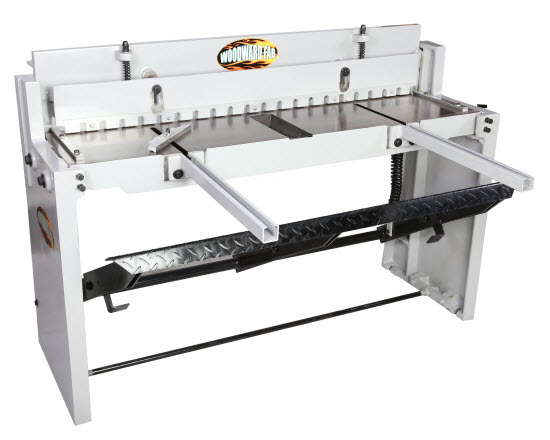Shearing is one of the inevitable operations in the metal fabrication industry that helps to trim and remove unwanted material from sheet metal quickly and effectively. It is a common process carried out in all metal fabrication shops to precisely cut metal sheets, plates, and tubes to required specifications. Although the process does not cause any burning or melting, it can cause a quite a lot of defects to the work piece. At Woodward Fab, you can look up to for quality sheet metal shearing tools, and equipment. This post discusses a few of the common shearing mistakes and ways to avoid them.

Watch an Eye on these Metal Shearing Faults
The following are a few common shearing mistakes that metal fabrication professionals tend to make during the process. This section also offers insights on how to get rid of shearing defects.
- Deformed Edges: Edge deformity of one of the common metal shearing defects caused due to incorrect blade shear gap, damaged blades, or inappropriate down pressures. To prevent such faults, operators should ensure to set the blade gap properly as per the specification of the metal being cut, whilst also confirming that the clamps are holding the material correctly in place. Additionally, it is imperative to check the sharpness of the blade.
- Twisting: One of the reasons behind this metal shearing fault is twisting the plate along its axis, which results in twisting the pieces into scrolls or spins. Excessive rake angle also leads to twisting. To avoid such mistakes, operators must adjust the rake angle as per the sheet metal geometry, material characteristics, and cutting parameters.
- Bowing: If you observe a work piece with edges slightly rising from the plane, this may be due to improper metal shearing. It is one of the common metal shearing faults termed as bowing. Long thin, narrow strips of metals are more prone to down bowing. To reduce this effect, it is recommended to reduce the rake angle to the minimum, whilst holding the sheet metal with a back support.
- Cambering: Cambering happens when there is a variation of sheet thickness along with its width. This defect happens when the work piece moves horizontally with no twist, resulting in convex, concave and triangular shaped material. Being one of the common shearing mistakes, operators try to minimize it at the early stage by shifting the grain directions of materials and by adjusting the rake angle of the work piece.
Recommendations to Avoid Metal Shearing Defects
Although shearing process may lead to several aforementioned defects, it is still the top most option considered to achieve cleaner cut and straighter edges. It also produces minimal or no kerf, and allows you to cut small lengths of material at a time without forming chips, burning or melting the material. While the common shearing mistakes can be avoided easily, the following are a few recommended methods that ensure the best end results.
- Know your Machine: Most importantly, operators must spend time in understanding the function, design and the operation before using the machine. Read the user guide carefully and know the maximum allowed capacity and warning signals. Ensure to safeguard the machine with proper lubrication and fluids as recommended by the manufacturer.
- Inspect Regularly: Sheet metal shearing machines are subjected to rugged usage in industrial set up. Hence, to prevent downtime, performing a periodic inspection is a must. Check the machine closely for any damage, wear, and lack of lubrication. Additionally, ensure that the safety mechanism is properly in place to avoid unforeseen accidents. Documenting such inspection is also mandatory for two major reasons; to prepare a preventive maintenance plan and to initiate immediate repairs.
- Check the Blades: A key to optimum shear quality is setting the blade properly as per the specifications of the work piece. Ensure to inspect the blade for its sharpness and clearance before the starting each shearing process.
- Immediate Repairs: Do not run the machine in case you find any unusual working pattern. Stop and examine the machine immediately. Perform troubleshooting if they are minor; or call in an expert quickly to prevent a disastrous failure.
With the implementation of the aforementioned steps, you can get rid of shearing defects that occur commonly in metal fabrication shops. Moreover, it is advisable that you source shearing machines from trusted manufacturers like Woodward Fab. With such high-quality metal fabrication tools and machines procured from experts in the field, you can ensure hassle-free slicing through sheet metal with extreme precision.
Related Post:
- Tool Mastery: How Expertise with Your Equipment Impacts Sheet Metal Results
- How to Optimize Your Metal Fabrication Workflow
- Different Pipe and Tube Cutting Techniques and Equipment Discussed
- 5 Safety Tips to Follow When Working with Sheet Metal Shearing Tools
- Comparison between Nibblers and Shear Tools
